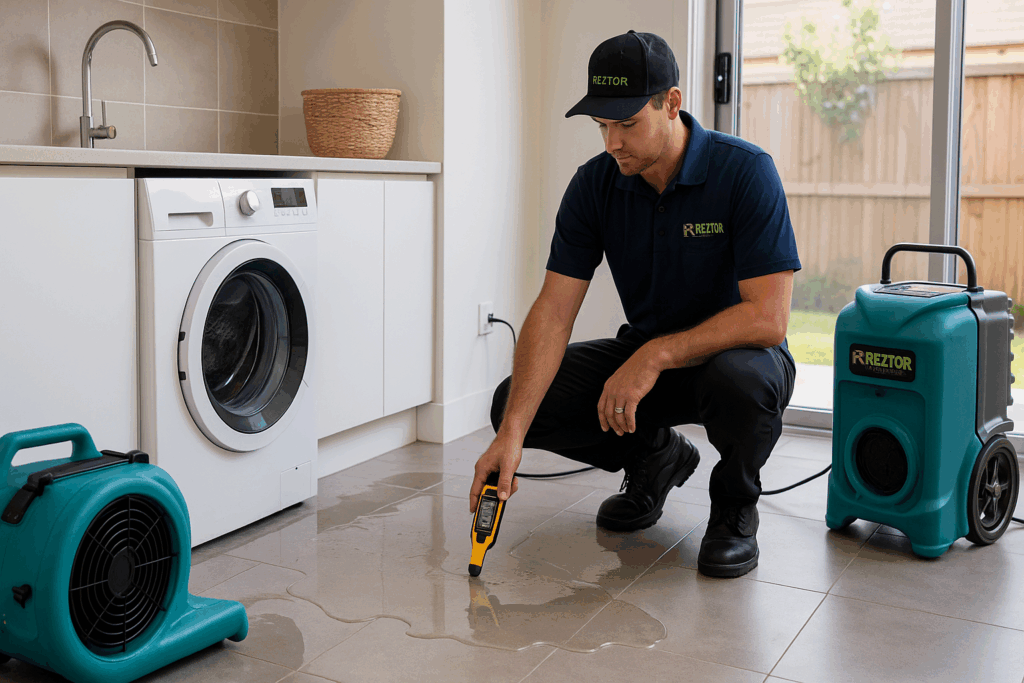Every year, thousands of tonnes of building materials, carpets, and furniture end up in landfill after floods and water damage. Yet much of this waste could be avoided through professional restoration. At Reztor Restoration, our philosophy is simple: restore what can be saved, replace only what cannot. This approach not only protects homes and businesses, but also reduces environmental impact and strengthens community resilience.
The Cost of Throwaway Recovery
Traditional approaches to water damage often lean toward disposal. Wet carpets are ripped out, cabinetry is demolished, and contents are discarded. While this may seem faster, it creates mountains of waste and drives up both costs and environmental consequences.
Restoration-based approaches — when carried out by certified experts — can achieve the same safety outcomes while salvaging far more materials. For homeowners, this means saving treasured belongings. For businesses, it means less downtime. For communities, it means fewer truckloads of debris headed to landfill.
Reztor’s Standards-Driven Approach
Reztor operates according to the AS-IICRC S500:2025 Standard for Professional Water Damage Restoration, ensuring that every decision is backed by science and sustainability. Using advanced equipment such as dehumidifiers, air movers, and thermal imaging cameras, our technicians can often dry and restore materials that might otherwise be written off.

- Wet Carpets and underlay can often be restored if addressed quickly.
- Saturated Cabinetry and timber may be dried and treated rather than replaced.
- Damp Contents and textiles can be professionally cleaned and returned to use.
By prioritising restoration, we reduce unnecessary waste and help families and businesses recover faster.
A Community and Environmental Mission
Led by experts such as Matthew Brunes, a triple master certified restorer, Reztor is not only raising standards in the industry — we are reframing restoration as a community service. Flood recovery is about more than buildings; it is about protecting health, livelihoods, and the environment.
By focusing on sustainable restoration practices, we are ensuring that flood recovery efforts in Australia are both effective and responsible.
Conclusion
When disaster strikes, the instinct may be to rip out and replace. But in many cases, there is a better option: restore. With a commitment to international standards, environmental responsibility, and community wellbeing, Reztor Restoration is leading the way in sustainable recovery after water damage.
👉 Learn more about Reztor’s flood clean-up services and how restoration-first practices are reducing waste and helping Australian communities rebuild with resilience.

